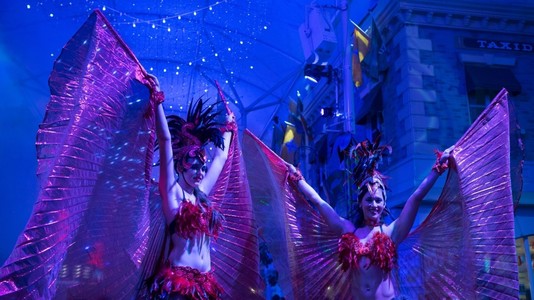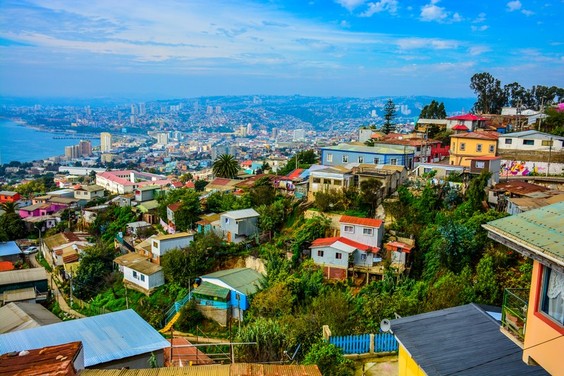DID YOU KNOW?
As you plan for this must-see region, we return to the numbers. Specifically, six things you should know before you explore the mesmerizing South American locales featured on Crystal Symphony sailings.
Feel the Rhythm, Savor the Flavors, and Get Outdoors

- Even if you don’t dance, you dance here. Dance, rhythm and music could be considered official languages in South America. They are as integral to the storytelling of cultural history as school text books, and decidedly more colorful and enticing. Even travelers who prefer to take in the complex choreography from the edges of the dance floor rather than center stage will be hard pressed to keep their hips still once the lights go down. Argentina’s famous Tango, Brazil’s spicy Samba, Chile’s seductive Cueca, and Uruguay’s percussion-driven Candombe – all speak directly to the inner dancer of any traveler.
- This is not a land of introverts.Particularly in the vibrant cultural centers and big cities, the South American way is decidedly vivacious. In many places, you’ll be greeted coming and going with a customary double cheek kiss, which immediately makes you best friends. Argentina and Brazil, especially, share a culture of boundless openness, demonstrated in different ways. Brazilians express themselves freely through animated dialogues, and of course, music best enjoyed at pulsating decibels. Argentines are famously welcoming people, who relish engaging visitors in conversation about where they’re from. This is due to the fact that tourism in Argentina is relatively newly thriving within the last couple decades, and locals are keen to show off their country.
- It has UNESCO clout. Among the four countries visited on Crystal voyages in 2019 – Argentina, Brazil, Chile and Uruguay, there are a whopping 40 World Heritage Sites. The vibrant Historic Quarter of Valparaíso and the Churches of Chiloé are must-sees in Chile, while the aforementioned Iguazú/ Iguaçu National Parks in Argentina and Brazil will take your breath away. Bonus clout: Rio de Janeiro’s Christ the Redeemer statue was named one of the new Seven Wonders of the World.
- Life is meant to be lived outside.Like its people, South America’s adventurous spirit lies outside the constraint of walls. Each country bears its distinct treasures and preferred methods of exploration, but they all share the philosophy of getting out there. There being most anywhere in this lush land, since there are tropical forests, national parks, endless beaches, and panoramic mountains virtually everywhere. Among the most monumental include Iguazú Falls, comprising 275 individual waterfalls over 136,000 acres – so massive that it spans both Argentina and Brazil (both countries have designated national parks surrounding the falls); Brazil’s Pantanal wetland, one of the largest in the world; and the volcanic Andes mountain range that runs through Chile (and six other countries, making it the longest in the world).
- No thirst goes unquenched.South American sunshine can mean parched palates, which is an opportunity for discovery all on its own. In their typical imaginative fashion and passion for the best things in life, South Americans have a beverage to suit any taste, and per usual, with their own distinct flair. Coffee is a big deal here, but it doesn’t rest on traditional laurels. Mate (máh-tay) tea originated in northern Argentina and is still an everyday mainstay there and in Uruguay. Pressed from Yerba leaves, its flavor is akin to a strong green tea, and is meant to be enjoyed in groups. This is a daily ritual for many locals and a great way to connect with everyday culture. Argentina is also where you’ll find the submarino, a decadent dessert in a glass. In Buenos Aires’ old style cafés, these are served as a glass of warm milk with an entire chocolate bar melting inside.Meanwhile, in Brazil, you can scarcely walk two city blocks without encountering a juice bar that could double as a tropical fruit farm. Again, going beyond the accepted norms of other countries, Brazilians are experts and creating fresh concoctions from fruits many visitors have never heard of – caju, camu-camu, and graviola. Fresh juice bars are a way of life in Brazil, and a flavorful alternative to just about anything. And then there’s the wine…
- About that wine…Malbec from Argentina’s Mendoza region, the fruity tannins of Uruguay’s Tannat, and some of the oldest vineyards in the world in Chile, which produce world-class Cabernet Sauvignon, Chardonnay, Sauvignon Blanc and many other varietals. Brazil, on the other hand, touts a national cocktail, rather than cultivated vintage. The caipirinha is a sweet concoction of sugarcane hard liquor called cachaça, lime and more sugar. Like bottles of wine and many other things in South America, these drinks are meant to be shared and enjoyed with friends. Add these to your thirst-quenching plans while in South America.








